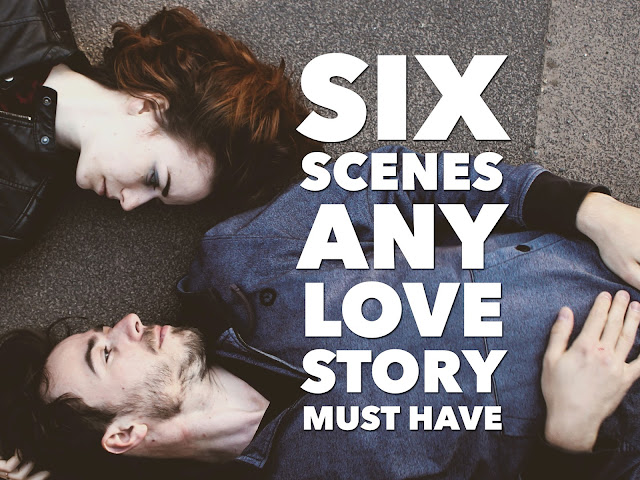The work never matches the dream of perfection the artist has to start with. —William Faulkner
Welcome to the November madness that is NaNoWriMo! Every day this month I’m blogging about a key scene, one that any story will include. I take a close look at how this scene, this structure, is implemented in three popular genres: Action, Romance and Mystery. So far I've posted articles about the Inciting Incident, the Climax and the Midpoint Climax.
Today I'm going to talk about the first pinch point.
Pinch Point One: Breaking It Down
What is a pinch point? Sue Coletta writes: “A pinch point is a demonstration of the nature, power, and very essence of the antagonistic force.[1]”
Exactly!
I blogged about pinch points a little while ago (see: Story Structure: What Are Pinch Points?), but let’s go over them again. A pinch point reminds the reader of the nature of the antagonist, the extreme threat he poses to the protagonist and what is at stake. In other words, it brings us back to the main story arc.
Two different kinds of pinch points
As far as I can tell there are two different kinds of pinch points, depending on how developed the protagonist’s internal desire is; that is, how big of a role this desire plays in the overall story. (See: What Kind of Writer Are You? Dramatic Action versus Character Development.)
Outward facing pinch points.
For lack of a better term, I’m going to call these outward facing pinch points.
In an outward pinch point, the threat is mainly physical; the protagonist’s life is in danger. In these sorts of stories the protagonist usually doesn’t have a well-developed internal desire. Here the focus is on showing the audience the power of the antagonist and highlighting how very bad it will be for the protagonist if she fails to achieve her goal.
Raiders of the Lost Ark contains a great example of this. The first pinch point shows us the conflict between Indiana Jones and Dr. René Belloq. In this scene Indy believes Marion has been killed by Belloq’s minions. He gets drunk and goes to confront his nemesis. After a marvelous discussion about each man’s philosophy of life and relic hunting, the two men face-off—but it’s not a fair fight because Belloq is surrounded by his minions. Jones’ life is saved when a group of children surround him and escort him to safety.
Inward facing pinch points.
Second, there are inward facing pinch points. In an inward pinch point the threat doesn’t necessarily have to do with life and death (though it might), it has to do with the overall destruction of the life itself, of the one thing that makes it meaningful. It is a moment of truth leading to intense pain and radical change (perhaps not right away, but it puts events in motion).
For instance, in You’ve Got Mail, Kathleen Kelly loses the thing she loves most in the world, the bookstore she inherited from her mother. She loses it because a big chain bookstore, Fox Books, has moved into her neighborhood. In the first pinch point Kathleen Kelly and Joe Fox have a face-to-face confrontation and it is a barn burner. Kathleen is deep in denial and Joe, in the most brutal of ways, tells her the truth: You can’t complete with Fox Books, you are going to lose your business.
As a result Kathleen is wrenched out of the state of denial she has been stubbornly clinging to and the truth begins to filter through: she is going to lose her bookstore. This seems unkind, and it was, but it was true and it was something she needed to prepare for. Recognizing the truth of her impending loss broke her heart, but it also did her a service, it helped her prepare for the inevitable.
Where is it?
The first Pinch Point occurs about 37.5% of the way through a story, or half way through the middle of the first half of the second act. (If you’re using a four act structure, the first Pinch Point comes halfway through the second act.)
How is Pinch Point One connected to the protagonist’s desires?
In any kind of Pinch Point it is what the protagonist wants, what the protagonist is seeking, that brings her into conflict with the antagonist. Though the protagonist and antagonist have different ends, different ultimate goals, they both want/desire the same thing.
How Pinch Point One is Implemented in Three Genres: Action, Romance & Mystery
For the first pinch point there really isn’t a lot of variation across genre.
Action Genre
In an action story, this will be a scene that highlights the essential difference between the protagonist and antagonist, and how this difference is reflected in their actions. Also, there will be an element of violence or implied, perhaps impending, violence.
Romance Genre
In a romance, the first pinch point will be a menacing scene. For instance, perhaps there will be a misunderstanding and the antagonist will threaten, or appear to threaten, the protagonist. Or perhaps, as in You’ve Got Mail, the antagonist will harm the protagonist through wielding truth like a scalpel.
Murder Mystery Genre
In a murder mystery the first pinch point often takes the form of the detective receiving an anonymous note from the murderer, or perhaps something the murderer does puts the detective’s life in jeopardy.
This is a scene that showcases the essential difference between the sleuth and the killer, the difference in how they think of both the world in general and the value of human life in particular. If the killer threatens the sleuth this could be used to foreshadow events at the climax.
Every post I pick a book or audiobook I love and recommend it to my readers. This serves two purposes. I want to share what I’ve loved with you, and, if you click the link and buy anything over at Amazon within the next 24 hours, Amazon puts a few cents in my tip jar at no cost to you. So, if you click the link, thank you! If not, that’s okay too. I’m thrilled and honored you’ve visited my blog and read my post. :-)
Today I would like to share a link to K.M. Weiland’s marvelous book, Outlining Your Novel: Map Your Way to Success. Her book can help you choose the right type of outline for you, guide you in brainstorming plot ideas, aid you in discovering your characters and show you how to structure your scenes. What’s not to like?!
That’s it! I’ll talk to you again tomorrow when I go over another key scene.
How are you doing with NaNoWriMo? Do you have any tips and/or tricks you’d like to share for achieving your word count?
Word count so far: 5,578
Word count for today: 1,200
Total words this month: 6,778
Notes:
1. “Pinch Points In Fiction Writing,” by Sue Coletta.







